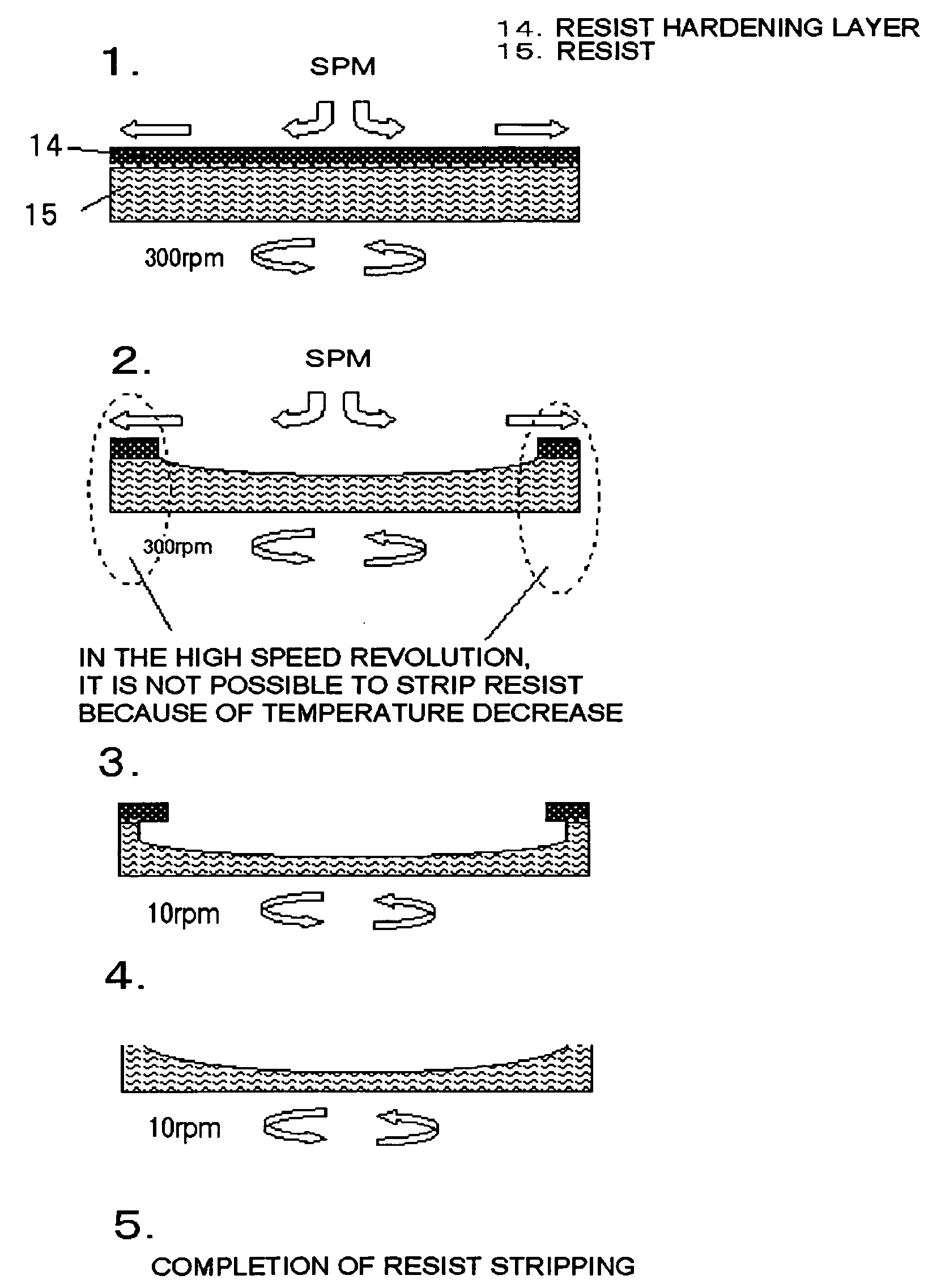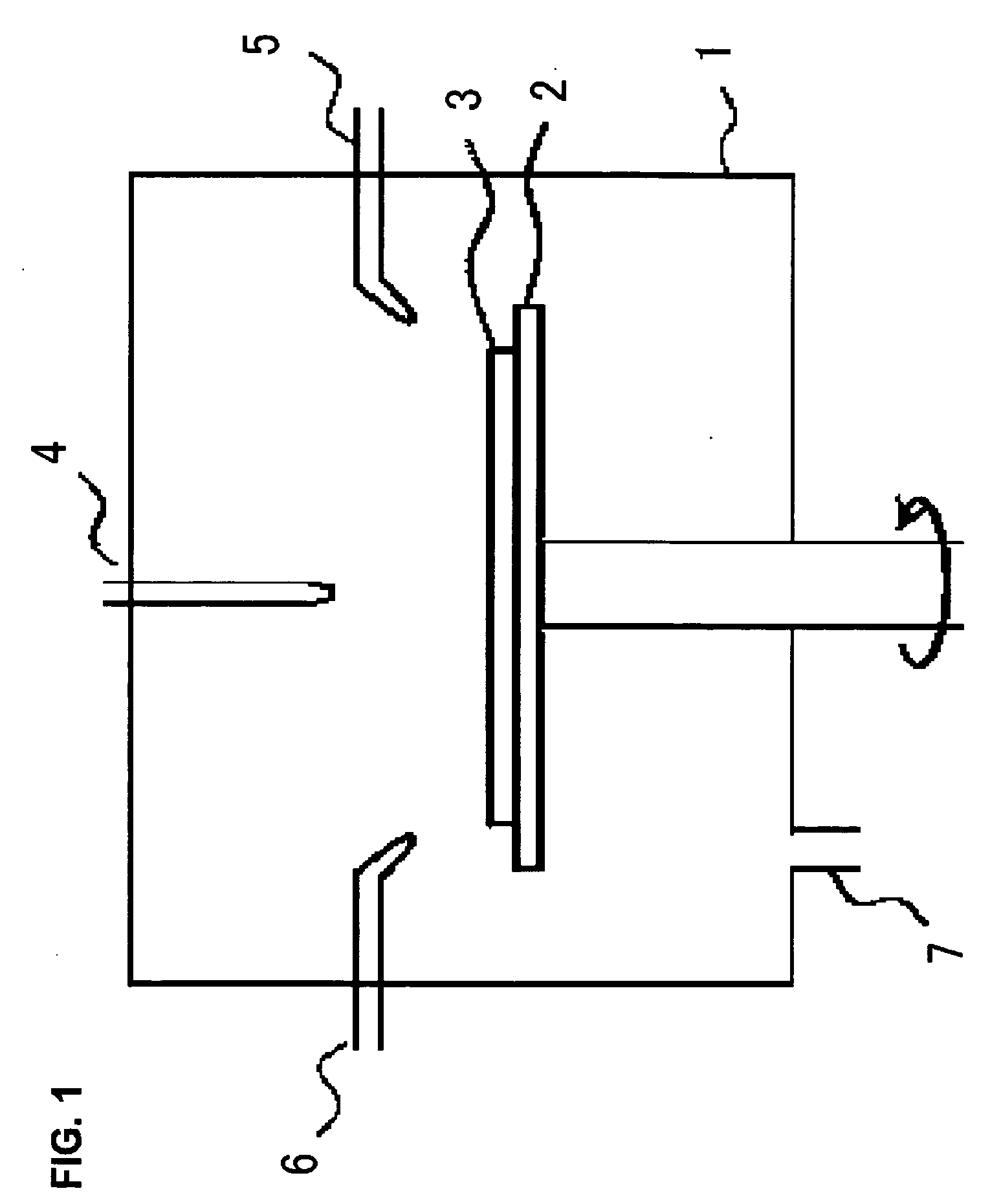Method for manufacturing a semiconductor device and a cleaning device for stripping resist
a cleaning device and semiconductor technology, applied in the direction of photomechanical equipment, photosensitive material processing, instruments, etc., can solve the problems of missing the pattern, serious problems, and adhesion of particles or metallic impurities to the wafer surface, and achieve the effect of stripping the resist pattern and effectively stripping the par
- Summary
- Abstract
- Description
- Claims
- Application Information
AI Technical Summary
Benefits of technology
Problems solved by technology
Method used
Image
Examples
first embodiment
[0099]FIG. 11 is a view showing outline constitution of a substrate treatment device 100 according to the present embodiment. This substrate treatment device 100 is provided with a treatment chamber 102 including a substrate mounting table 104, a first container 126 accommodating a first liquid supplied to the surface of the semiconductor substrate 106, a second container 130 accommodating a second liquid supplied to the semiconductor substrate 106, a mixing part 114, which is communicated with the first container 126 and the second container 130, producing mixture while mixing the first and the second liquids supplied from these containers, a nozzle 112, which communicates with a mixing part 114, supplying the mixture to surface of the semiconductor substrate 106, and a piping 115, which connect the mixing part 114 with the nozzle 112, introducing the mixture from the mixing part 114 to the nozzle 112. In periphery of the piping 115, piping heater 160 heating the piping 115 is disp...
second embodiment
[0135] The present embodiment shows an example providing two nozzles spraying mixture to the semiconductor substrate 106. FIG. 14 is a view showing one example of the substrate treatment device 100 according to the present embodiment, and FIGS. 15A, 15B are views showing position relationship between nozzles 112a, 112b shown in FIG. 14 and the semiconductor substrate 106. Device structure of the present embodiment is the same as the device structure indicated in the first embodiment other than the nozzle structure. The point arranging the heater around the piping 115 and the nozzles 112 is the same as that indicated in the first embodiment.
[0136] As shown in FIGS. 15A, 15B the nozzle 112a sprays the mixture to the end part of the semiconductor substrate 106, and the nozzle 112b sprays the mixture to the center part of the semiconductor substrate 106. The nozzles are prepared at the angle “a” to the substrate surface and at the angle “b” to the direction of the substrate tangent.
[0...
third embodiment
[0139] In the present embodiment, indicated is an example in which the mixture is made to spray to the semiconductor substrate 106. FIG. 16 is a view showing one example of the substrate treatment device 100 according to the present embodiment. Device structure of the present embodiment is the same as the device structure indicated in the first embodiment other than the nozzle structure. The point arranging the heater around the piping 115 and the nozzles 112 shown in FIG. 17 is the same as that indicated in the first embodiment. As shown in the drawing, in this device, the nozzle 112 becomes movable because of control of a moving part 140. The nozzle 112 is constituted so as to spray the mixture while moving a sprayed portion from substrate center to periphery part. In such a constitution as above, within treatment surface of the semiconductor substrate 106, temperature becomes even, as a result, resist stripping efficiency becomes even. Although the present embodiment is one in wh...
PUM
| Property | Measurement | Unit |
|---|---|---|
| width | aaaaa | aaaaa |
| height | aaaaa | aaaaa |
| thickness | aaaaa | aaaaa |
Abstract
Description
Claims
Application Information
 Login to View More
Login to View More - R&D
- Intellectual Property
- Life Sciences
- Materials
- Tech Scout
- Unparalleled Data Quality
- Higher Quality Content
- 60% Fewer Hallucinations
Browse by: Latest US Patents, China's latest patents, Technical Efficacy Thesaurus, Application Domain, Technology Topic, Popular Technical Reports.
© 2025 PatSnap. All rights reserved.Legal|Privacy policy|Modern Slavery Act Transparency Statement|Sitemap|About US| Contact US: help@patsnap.com



